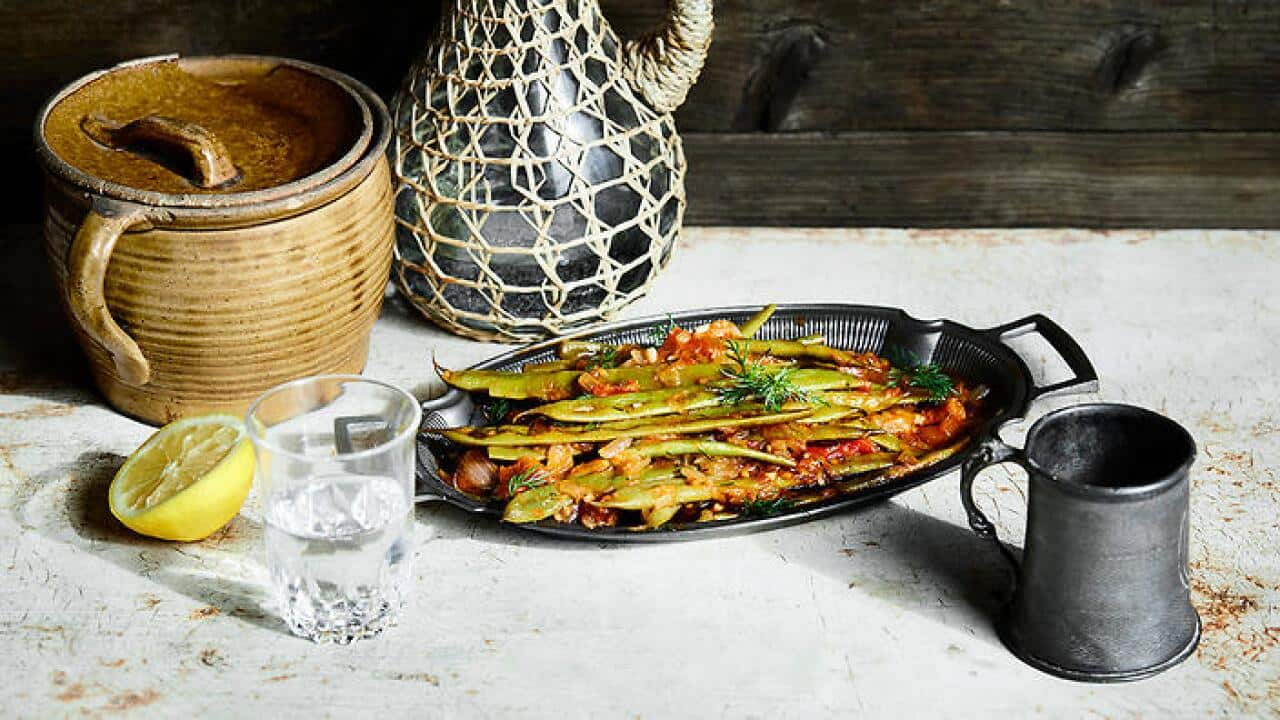Mention the word ‘dessert’ to a child and they’re likely to respond in a joyous, overanimated fashion – almost as though they’ve already ingested mouthfuls of sugar. Add ‘chickpeas, barley and beans’ to the sentence about dessert, however, and it’s probable you’ll be met with confusion, horror, and (depending on how you go about what happens next) a great deal of trauma.
The first time I can remember my grandmother placing a bowl of before me, I was puzzled more than anything else. “But we’ve already had dinner,” I whined as I spied the dreaded chickpeas making themselves known at the surface of the dish. “You said we were having tatlı (dessert). Where is that?” Well, you can imagine my reaction when she said that this was indeed the dessert she spoke of – chickpeas and all. Cue bone-crushing disappointment.
Kids will take decades to appreciate what I’m about to tell you next, but the Turkish dish of aşure (also known as Noah’s pudding) is one of the in the world, a thick porridge-style mixture consisting of grains, pulses, dried fruits, nuts and spices. Its history is patchy, but anecdotally, it’s believed that the dish either came to be as a celebratory dish when Noah’s Ark arrived at , or that Noah combined whatever ingredients were left to keep all passengers in the ark well-fed until they reached their destination. Hence the wild list of ingredients used to make a dense, calorie-heavy and ridiculously tasty dessert.
The Turkish dish of aşure (also known as Noah’s Pudding) is one of the oldest desserts in the world, a thick porridge-style mixture consisting of grains, pulses, dried fruits, nuts and spices.
Unlike other deserts – say a – where ingredients and measurements must be precise to ensure success, with aşure the rules are (to paraphrase that famous line in Grease) there are no rules. Although it has at least seven to 10 ingredients, some can feature more than 30 which can include wheat, rice, barley, the dreaded chickpea, beans, dates, currants, dried apricots, figs, almonds, walnuts, pine nuts and basically anything else that’s not meat, chicken or fish. Some add cumin seeds and cardamom, others might include rosewater and cinnamon and some will also feature orange and lemon peel. There is no set recipe; just a commitment of your time for prep work, and a dedication to feed the masses with the labour of your love (the dish is traditionally made in large quantities and distributed to friends, family, neighbours and colleagues as a mark of love and respect).
Although I was initially disturbed by a chickpea-and-bean-incorporating dessert, I soon came to the party after I witnessed everyone else try it. Once I saw their eyes roll into the back of their heads as though they were at an Elton John party, circa 1975, I knew it was worth giving it a go. For the next few years, I could often be found in front of the kitchen bench, eyes exactly at aşure height, waiting for it to finish cooling. I ate it with gusto (even the chickpeas) and even now, some 35 years later, I can remember exactly how it tasted, smelled and felt in my mouth. More than that, I can recall how much joy it gave my grandmother to watch her family eat her labour of love.
The dish has stayed in my memory, frozen in time, because after my grandmother died when I was eight years old, I’ve never been able to eat another aşure. The last one I ever had was cooked by her familiar hands and although I still hanker for it all the time – asking friends to describe theirs in delicious detail or sniffing at window displays like a dog in a butcher shop, I just can’t go there. Even when I lived in Turkey for a period and a neighbour dropped off a pot of it, I thanked her kindly before secretly disposing of the dish as though it were radioactive waste.
Maybe one day I’ll stop missing my grandmother so much that I’ll eat aşure again, but I’m just not there yet. In the meantime, I’ll just keep recommending the dish to others in the hope they’ll tell me all about it afterwards. It’s not for nothing that it’s known as the pudding of love. In fact, I’m counting on it.
A taste of Turkey

How Turkish manti keeps me connected to my community










